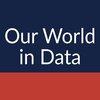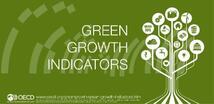secondary data - Data Bases
Secondary Data Bases
It is possible to use databases as the source for IA investigations, though this would need to be carefully managed. A challenge with using informatics/databases in IA work will be generating quality questions that can be explored effectively. However, this must be a unique analysis.
It is important that you consult relevant and reliable sources in your research. You need to evaluate all the sources that you use for your secondary research.
Example of how you treat secondary data
My investigation of the research question was held in the following ways:
It is important that you consult relevant and reliable sources in your research. You need to evaluate all the sources that you use for your secondary research.
Example of how you treat secondary data
My investigation of the research question was held in the following ways:
- An analysis of secondary data from a variation of reports and books regarding xxx data, number of xxx, year span, economic value, social value, impact data, etc. Collected data that will be looked at will range from 1xxxx - xxxx.
- All the following data will be regarding countries and regions in xxx, mostly focusing on countries such as xxxx.
- From all the data gathered I will be able to produce my own graphs (referencing the data found) and be able to make connections and links between xxxx and the number of xxxx, and the loss of xxxx.

World Bank
Search on this database for data on global issues and banking. The World Bank Data is an open data initiative of World Bank group that collects statistical data that are essential to help alleviate poverty. 
|

One World in Data
Search on this database for global issues data such as poverty, disease, hunger, climate change, war, existential risks, and inequality. |

Worldometer
Shows estimated current numbers based on statistics and projections from the most reputable official organizations such as United Nations Population Division, World Health Organization (WHO), Food and Agriculture Organization (FAO), International Monetary Fund (IMF), and World Ban |

Gapminder
Learn what life is really like behind income statistics. |

Inequality Facts
Data on inequalities -- income, wealth, global, health, gender, racial economic inequality. |

Global Refuge Agency
Data about refugees, displaced communities, and stateless people. |

ILO Statistics and Database
Statistics about labor around the globe such as employment and unemployment, child labor, wage, occupational injuries, etc. |

UNESCO Atlas of the World's Languages in Danger
Data on world languages. The websites includes an interactive map that shows different languages in specific country. |

World Demographics
Data on world population, sex ratio (males vs. females), population pyramid, population by broad age group, age structure and sex (all age groups), median age, dependency ratio, fertility rate, life expectancy, infant and children under 5 mortality, urbanization and population density. |

WTO Data
Statistical data related to WTO issues. (WTO is an intergovernmental organization that is concerned with the regulation of international trade between nations.) |

UNESCO Data
Data, information and researches about global education, women in science, research, |

Global Economic and Financial Data
IMF data for GDP growth, inflation, unemployment, payments balances, exports, imports, external debt, capital flows, commodity prices. |

State of Global Air
Raw data and other resources on air pollution and health data. |

World Health Organization
Data related to world and country specific public health and medicine. |

FAOSTAT
Data about agriculture production, emission, economy, land use, and forestry |

Agriculture Market Database
World and country specific supply and demand data of commodities -- maize, wheat, rice, and soy bean. |

Global Food and Agriculture Data
Statistics on water resources and management, fishery and aquaculture, food consumption behavior, domestic animals, and GMO plants. 
US Climate Map and Data
Data snapshot and search data set on US climate |

USDA Nutrients Data Base
An integrated data system that provides expanded nutrient profile data and links to related agricultural and experimental research. 
NOAA Climate and weather databases
Statistical analysis on climate and weather |

AQUASTAT
Global water information system, known to be the most quoted source on global water statistic |

Global Drinking Water Statistics
Global statistics on drinking water, water sanitation, and health |

Sustainable Development Goals
SDG Tracker that measures the progress of the UN Sustainable Development Goals |

Global Invasive Species Database
Database about alien and invasive species that negatively impact biodiversity. |

Global Footprint Network Open Data
Data related to ecological footprint. |

World Tourism Statistics
Tourism statistics for all the countries and regions around the world. Data includes inbound, domestic and outbound tourism, as well as on tourism industries, and employment. |

UN Environment Programme World Conservation Monitoring Centre
Data and knowledge-based tools to help understand how we depend on and impact biodiversity |

ReefBase
Information on a country's geography, people and marine and coastal resources. In addition, it includes quantitative statistics on various geographic and socioeconomic parameters |

UCN Red List Summary Statistics
Summary statistics of threatened species |

Facts and Figures on Biodiversity
Descriptive statistics on current world biodiversity. |

CITES Endangered Species Database
Centralized portal for accessing key information on species of global concern. |

World Tropical Forest Loss
Summarize statistics of global forest loss. |

International Energy Agency Data and Statistics
Data related to energy such as supply and consumption, import/export, waste, and carbon emission. Data available can be filtered by energy type i.e. natural gas, coal, etc 
EBSCO - Green File
A bibliographic database of information about environmental concerns. |

IRENA Statistics
Statistics on renewable energy 
Resilience Alliance
An international, multidisciplinary research organization that explores the dynamics of social-ecological systems and resilience and tipping points |

Environmental Data Initiative (EDI)
Contains data and metadata from publicly funded research. Data can be searched through their portal. |

eBird
Find out what birds to expect throughout the year in a region or location |

WWF Conservation Science Data and Tools
Scientific publications, computer-based tools, and data sets generated by WWF strengthen the integrity of conservation efforts worldwide. |

EPA
The Multisystem Search Form allows you to search multiple environmental databases for facility information, including toxic chemical releases, water discharge permit compliance, hazardous waste handling processes, . |

United States Department of Agriculture
FoodData Central is managed by the Agricultural Research Service and hosted by the National Agricultural Library. Contains a complete nutrition profile for various food and drink items. |

OECD environmental data and indicators
The OECD Environmental Data Compendium presents data linking pollution and natural resources with economic activity placing pressures on the environment. |

Pangea
Georeferenced database from earth system research of atmosphere, ecology, biosphere, fisheries |

Environmental Performance Index
Provides a data-driven summary of the state of sustainability around the world. Using 32 performance indicators across 11 issue categories, |

National Wildlife Health Center
Wildlife disease detection, control, and prevention in the United States |

Center for International Environmental Law
Reports published every year on important environmental issues |

DOAJ
A community-curated online directory that indexes and provides access to high quality, open access, peer-reviewed journals |

ScienceDirect Environmental Science
Provides access to a large bibliographic database of scientific and medical publications |

Climate Interaction
Climate Interactive creates interactive, easy-to-use, and scientifically rigorous simulations that enable people to see connections, play out scenarios, and see what works to address the biggest challenges we face 
CIA World Fact Book
The World Factbook provides basic intelligence on the history, people, government, economy, energy, geography, communications, transportation, military, terrorism, and transnational issues for 266 world entities 
BioTime
BioTIME is a comprehensive collection of assemblage time-series in which the abundances of the species that comprise ecological communities have been monitored over a number of years. |

Carbon Monitor
Carbon Monitor is an international initiative leveraging the efforts of ten research groups to provide for the first time regularly updated, science-based estimates of daily CO2 emissions in different countries. 
NOAA Marine Microplastics
The database is a repository for multiple datasets of marine microplastics. The data are aggregated, archived, and accessible to users in a consistent and reliable manner. 
Data Nugget
Data Nuggets include a connection to the scientist behind the data and the true story of their research. 
Global Biodiversity Information Facility
An international network and data infrastructure funded by the world's governments and aimed at providing anyone, anywhere, open access to data about all types of life on Earth |
